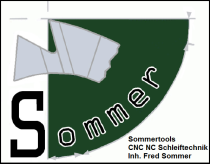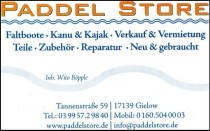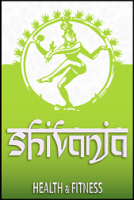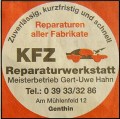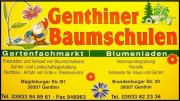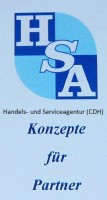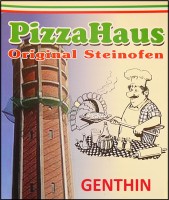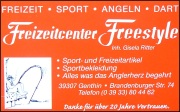Start in Argentinia
We arrived in Bariloche in mid of February. It`s just the end of the summer season in South America, but it’s still crowded in the town center. We like the buildings and the
narrow streets. Most of the houses are set with a perfect view to the great lake Nahuel Huapi.
Most of the houses are made of stones and wooden parts. It reminds somehow to an Austrian Swiss style of architecture. Bariloche offers also a high the abundance of chocolate in many varieties
and different sorts of sweets.
We stayed in the Pudu hostel for 2 nights, got sorted, bought a few items like a frying pan, batteries and food for the next days for our cycling start. We set up the bicycles
and had a test ride before we left for our Patagonia bike trip. On Valentine ’s Day we headed down south, starting with a huge climb out of town. It was too steep for the first day and our
untrained bodies. We had to push uphill through the more typical neighborhoods of Bariloche. After managing this, we hit the road Ruta 40 which will guide us further south.
We had a good first day of cycling: 27 degrees and the lovely sun in a clear blue sky brought us quiet intense sunburn. Besides this we rolled along the first rising mountains, crystal clear
lakes, green forests and small villages. In one of them, 80 km past Bariloche, we stopped at a wooden terrace and were asking for camping. Without speaking any Spanish we tried to explain
ourselves with hands and feet- it was no problem at all. We unpacked the bikes, pitched the tents and had an ice cold cerveza. Just in this moment another cyclist came past.
Tom
from Australia followed our waving hand signs and joined us for a beer. He is traveling from San Francisco (USA) to Ushuaia (ARG). Check out the
dirty two (http://thedirtytwo.com/) for more information.
Our ways were leading us together for more than 300 km south on paved roads. We grilled the first Argentinian steaks in El Bolson, stayed in Esquel at a noisy
campground and experienced the characteristic winds and pampa like landscape of Ruta 40. And also the hot, dry summer was treating the nature very hard. Most of the rivers were dried out. We had to
take care about our drinking water supplies and couldn't just stop at rivers to refill our bottles.
Also towns, villages and house were quiet rare, because of the not well developed countryside. As we passed Trevelin, we touched gravel roads for the first time. This was
like a warm up for the Carretera Austral in Chile. We took a turn west and rode to the boarder of Argentina and Chile. The process of showing Passports and get visas were easy and quickly done. We
knew, that we were not allowed to bring fruits, vegetables and milk or meat products to Chile to prevent a distribution of pests or diseases. Just a few kilometers before we had a big lunch break and
finished most of our fresh food. In our case we just had to give away our garlic. In exchange we got almost 10km of pavement to ride on till we arrived in the rafting town
Futaleufu.
Welcome to Chile.
Another day ride to Villa St. Lucia and we reached our main road, the Ruta 7, the Carretera Austral. This is a road leading from Puerto Montt in the north and going south for
about 1300km to Villa O'Higgings. The road was order from the president Pinochet in the 1970s to force a way to the almost unexplored south. It covers a region full of nature highlights. On the other
hand you will mostly find little villages and few thousand people living down there.
Welcome to the cycle adventure in Chile. Most of the road is gravel with many washboards like passages called “ripio”. It’s very interesting in the beginning, but turns out to be stressful and
exhausting after a few days. Many cyclists seem to choose especially this part of South America for a few weeks of traveling Patagonia. And sometimes it seems like there are more
bikes than cars along the road. The rough road conditions and the few villages with not much importance for economy or touristic business is probably the reason for the less car traffic.
But those conditions are part of the impression, the adventure and the roughness of that region. It’s always combined with an exclusive view of wonderful landscapes. Waterfalls, gorges and
steep rocky walls are going down to your side of the roadway. And with the next moment you look a long a powerful river, digging its way through the mountains. Untouched forest leaves as big as two
umbrellas, rainforest like structures and the stunning mountain range of the Andes on your left shoulders, just a few kilometers away. Impressive scenery was always surrounding us at all
times.
We have been cycling of an average of 5-6 hours a day with a distance of 60 – 90 km. Depending on road conditions, weather and daily physical fitness, we had finished the day in a village to
restore new food or camped wild along the way. There are few roadworks in progress. Within the last ten years, some passages became a nice paved surface. Reaching the beginning of one of those
sections, we feel absolutely happy. By reaching the end of this section our motivation turn down by the fact of hitting the hard ripio again.
We were always happy about meeting and talking to other cyclist. Sharing the information about upcoming hills, camp spots or interesting lookouts. Cyclists from all over the world are passing
our ways each day. Most of them are also stopping at the Casa del Ciclista, the warmshower community especially in South America. For example in Coyhaique, at the Casa of
Boris, we joined the cycling community. Many cyclists stopped at this place, even it was late in the season. We have counted 27 bikes and 19 tents one night. It’s always a nice come
together of friendly people sharing the same passion. A few of them we will see again on the road or hear about them a few hundreds kilometer further. We also enjoyed the “big city” life.
Coyhaique, is one of the big cities along the Carretera Austral with just 50.000 inhabitants. We take the chance for a proper laundry, checking emails, went shopping in a big supermarket instead of
buying stuff in the typical small supermercados. Even the central plaza was giving us a colorful change, with people selling food and crafts, dancing or cruising around with their BMX bikes.
After a few days of rest in Coyhaique, we continued further south, leaving together with a couple from Lichtenstein. Daina and Robin are riding their bikes
already few more than a year, coming from far up north. They are very likeable people.
By the end of the day, a few drops of rain and pleasant climb of around 500m we reached the peak of the national park Cerro Castillo at around 1000m. We entered the campsite of the national park
and camped at a very well maintained and nicely arrange spot. We enjoyed a fire in a concrete made grill, had soup and dinner together. Also Jorge, a Mexican cyclist was
part of our group for this night.
After a few days of cycling along some rivers and mountains we reached the town Puerto Tranquillo. The place is known for the boat ride to the Marmols at the western end of the
section of coastline (of Lago General Carrera) containing the Marble Caves of Chile. A must do if you are around. Thus, in a few thousand years’ time, the interaction of the marble and blue water of
lake formed a place of bewildering beauty - countless caves, mazes, columns and tunnels in the marble.
After finishing our day off with the funny boat ride we came back to the campsite. And just a few minutes later “our friends from the road” turned up. It was a lovely reuniting of
Tom, Diana, Robin and Markus. Since we all stayed together in Coyhaique, 220 km south, we all sat together at one table again. An amazing and great moment! Thanks
for the good times guys!!!
While the others stayed another day in Puerto Tranquilo we continued further. Passing some deep and blue lakes (Lago Bertrand, Lago Buenos Aires), climbing a few hills and rolling along the Rio
Baker. We stopped at a beautiful camp spot on the shore of Rio Baker. Thomas could finally go fishing and was lucky. Later in the day he caught 3 trouts, which we fried in our pan. Delicious.
Within the next days we have reached Cochrane. From here on the way of the Carretera Austral seems to be the very hard. We had to face many ups and downs on rough gravel. And the region is known
for the rainy and cold weather. The Mountains are not as high as the surrounding Andes that they won’t rain at the peaks. Somehow the wind shift the clouds full of water along the road and will give
us rain for a few days. Combined with a temperature of 7-8 degrees we have been fed up with the cycling. Up and down the hills, rain, and coldness. For one day. For 2 days. For 3 days. And
because of the rare villages you can’t just pull in a hostel to take a warm shower or dry some of the wet clothes. No, not here, you have to continue. Even finding a wild campsite was almost
impossible. We ask at one of the lonesome farms and pitched the tent.
On the third day of rain and coldness, we hit a moral rock bottom. Elly was angry and crying. Thomas couldn’t change the whole disappointing situation. But out of nothing a red pick-up turned
up. Two Chileans came to us and asked, if we need any help?! For sure!!! We load up the bikes on to the car and 2 minutes later we were sitting in the warm car. It was like a wonder. The boys took us
to their family house 25 km further in Rio Bravo. We got invited to the house. Hang up our wet belongings and shared a few cups of the mate tea. We were absolutely happy and warm
again. Muchas Gracias Claudio and Hernan!!!
But in these days, we have experienced the hard side of the Carretera, being out in the wild, facing the power of nature. It was a not nice, but memorable experience. On the next morning we hit
the road again with less rain and a bit of sun.
It was just another 95 km to Villa O`Higgings, the end of this challenging road. We had another stopover in a Refugio, a hut on the side of the road. There are made for travellers, mainly
cyclist to get a shelter of the rain. A nice wooden hut with a few benches and a small oven was a perfect place for the rest of the day. A Danish couple turned up later and we shared stories and food
later on.
On the 10th of March we have reached Villa O’Higgings. A Village, which was connected to the Carretera just in 1999. Since then, the Village starts to grow, tourism is becoming
bigger. From here you have to take a ferry to cross the Lago O’Higgings if you want to go further south. But the ferry takes just cyclist and walking people. No vehicles are allowed. O the other side
of the lake, there is no road, just a path to cross over to Argentina. Another challenge was waiting for us.
But first we celebrated our successful bike ride and the ending of the Carretera Austral with a big meal with mashed potatoes, onions and chicken, baileys and a kind of Jaegermeister. Happy
Days!!!
The ferry to cross the lake leaves twice a week. We have been lucky to catch the ride on the next morning. After 3,5 hours we landed on the other side. We stopped at the Carabineros to get the
stamp for leaving Chile.
From here on we had to push the bikes up the hill for an hour. The next 15 km was a mix of pushing and cycling through a mystic forest. The way was a perfect mountain bike trail, but not always
wide enough for our panniers. We had to cross a few small rivers and creeks.
The last 6 km were an adventures downhill part. An old horse trail was washed out, a kind of a draw, a runnel was leading down, sometimes just 80 cm deep and just 70 cm wide. We were
balancing the bikes and enjoyed one of our best day rides. Later on we came down pretty exhausted and checked in at the Argentinian boarder station. The offered us a fantastic camp spot at the
lakeside with a stunning view over to mountains of El Chaiten, our next destination.
We reached El Chaiten on the 14th of March. The Town is kind of a trekking capitol in Argentina. A relaxed atmosphere, colored houses and trekking tourism are the first
impressions. We stayed at the Casa del Ciclista at Flores Place. Flores is a very friendly mother of 3 boys. They live in a small house with just 3 rooms, a kitchen and a
bath. She is a passionate cyclist and offers her place to other cyclist. Everyone is welcome to camp in the garden and to use the house for cooking, shower and resting. Again, a lot cyclist come
together to share meals, stories and the love to cycle. We had a few rest days and also celebrating our 61st birthday (30th and 31st) with a cake, candles and a big
dish for everyone in the house. In these days we also discovered the amazing scenery of the surrounding landscape of the Mt. Fitz Roy (3405m) and the mountains. Its a very special
area.
As we left Flores and Yannick and Pauline (the last remaining cyclist for the season) we had a great tailwind going south. The next 90km we rolled without any paddling.
The wind was pushing uphill with 40 km/h and also downhill with 70 km/h. Amazing. But as we reached the junction going to El Calafate, we had to turn west. From this moment, the ride was a hard
challenge. The wind was blowing sideways. Every now and then we had to balance the strong gust. And the wind was getting strong and also turning to become a headwind. We had a speed of 6-8 km/h. It
was hard work for more than an hour. After this we got more trouble with the wind. He was too strong for us. Elly got kicked off the bike three times and found herself laying on the other side
of the road. Even Thomas couldn’t even hold his bike standing. As we checked the weather information the next days, it says we had wind up to 89 km/h!!! Way too much.
Anyway, we had been lucky, that an American couple, Barry and Sandra stopped by and were offering to take us and the bikes on her pick up. What a moment. We joined them
on the road to El Calafate. Thanks for that guys!!!
In El Calafate we head out to the famous Perito Moreno glacier. An impressive piece of ice we were looking at. Bluish colors, cracking sounds and falling pieces with the size of
small houses have been an amazing theatre. A lasting impression and a statement of the power of nature! El Calafate was also our most southern point. We took a bus back to Bariloche (28h) and
Santiago (20h).
We decided to go to Santiago, because friends we have met in New Zealand a few years ago, were inviting us. We have met Cristobel and Benjamin, two
cousins, almost exactly 2 years ago in Christchurch. At this time they have said, “If you come to South America one day, you are more than welcome to stay with us!” We have heard and said this
sentence a few times in the past years. The chance, that this event is going to happen one day lays more or less around 5 percent.
And for that reason, its even more impressive, that we have managed it to see the two friends again!!! On the other side of the world!!! Amazing. We arrived in Santiago at the bus terminal
and tried to cycle our ways up to the house of Chris’s family. It took us almost 2 hours cruising through this jungle of traffic in this city of 6 million inhabitants. But
we made it, and we have been happy to see Chris and meeting his lovely Mum and sister and the cat Dominga.
They welcomed us as we were part of the family. We slept in a cozy bed, could use the full equipped fridge and felt a bit like home. A great pleasure for us after being on the road for a few
weeks. Chris was introducing us to friends and family, guiding us around the city and the nearby mountains, were we had a great view above the city. As we had dinner the other night,
Sandro and Eloisa came to join. They are also part of the family, which is traditional huge in Chile. Its common to have many sisters, brothers, cousins and relatives.
Sandro and Eloisa mentioned that we could come and stay at their place as well, if we continue our ways further north. We enjoyed the time very much and hope to see you again one day. May be in
Germany ;-)
After a few days we got the bikes ready and hit the road again to go further west to the coast. Valparaiso and Vine del Mar were the next stops. Valaparaiso is a colored city
painted with big illustration, graffiti and letters. It’s also known for the steep road and the funicular, which are cabins on an escalator to rattle up and down the streets where it is almost
impossible to drive or walk. Very interesting and unique. We stayed in a hostel, because there is no place for camping, no garden caused of that steepness and very strait build house to house
situation. We enjoyed walking along the harbor and seeing some sea lions. Also watching the ocean for the first time in South America was great feeling for us.
We cycled further north, fighting ourselves through this crazy traffic on the way to Vine del Mar. We had to cross a 3 lane highway from left to right, sharing the side of the road with hundreds
of busses passing by. But a few kilometers we reached the Ruta Del Mar (F30E) going north. A winding road with less traffic is following the coastline. This is why we choose this part. Our way leads
up for 500 km to La Serena. On the way we have camped on campsite just a few meters off the pacific, with no one around, because it was off season already. We bought some goat cheese
of the local people and very delicious fruits. We spent the Easter weekend in Tongay with vine and watermelon. One day later we reached La Serena and followed the invite of Sandro and
Eloisa. Again, we have been welcomed in a very friendly and hospitable way. Shower, kitchen, sleeping room and food have been provided for us. Sandro was biking the harsh landscape of Torrres
del Paine just before. He loved the idea cycling around the country and was very to share the same passion. As we arrived Lukas, Michaela and Sophia, the Children of the
family have been there for the traditional Sunday-Meal. They all come together every week to share the family live.
Sophia, the oldest daughter and her boyfriend
Matthias just reopened a hostel in the city center. If you are around, go and stay in this nice
and friendly managed hostel (
OPEN HOSTEL, LA SERENA) with colonial style build rooms
. (https://www.facebook.com/openhostel?fref=nf).
The family also has a paradise like property further inland in the beautiful Valley de Elqui. We cycled the 70 km from sea level to an altitude of 600m and followed a road of
tropical fruits , which grows on the side of the way, ready to be picked. The valley is also known for the Origin of the traditional drink of Chile, the Pisco.
As we arrived at the described place, we were staying in front of an avocado farm. Within this hundreds of three, the family created a lovely camping area with BBQ-grills, pools and rest
areas in the green. Elly was so happy to surrounded of that many fruit trees like grapes, pomegranate, figs and avocados. As well Tuna (kind of a eatable cactus), cotton and apricot was growing
there. The close by town Vicuna has a observatory. We went to the Mamalluka observatory and were looking to stars and planets. The area is known for the clean air and therefore that
many observatories. It was a beautiful night, looking through the telescope to see a great white doted sky.
As we came back to La Serena we booked a bus up north to San Pedro de Atacama. We had to pass the area around Copiapo. Almost a week earlier this region got swamped by heavy rainfalls in the
Andes and the desert!!! There hasn’t been rain for the last decades and now, the people had lost their belongings. Their houses and also some have lost their lives. Many people say, cause to the
climate change, Chile is facing a lot nature catastrophe. It rains in the driest areas in the north, and there are bushfires in the usually wet and green countryside’s down south.
We arrived safe in the town of San Pedro de Atacama, the closed town to the most dries area in the world. The Atacama desert. A moon like landscape. Surprisingly it wasn’t flat
and sandy. It´s more rocky, rough and a bit hilly, but almost everything is covered in a thin white layer of salt. Many volcanoes are rising in the surrounding mountains of the Andes. We stayed a few
days, got acclimatized and set off for the salt flats of Uyuni in Bolivia.
Welcome to Bolivia
For the next adventure and the crossing to Bolivia we booked a 3 days jeep tour. But we had to put our bikes on top of the car. We went up to 4900m, visited many Lagunas which shined in
different colors. Hundreds of pink flamingos were feeding from the red colored algae’s in the Laguna, lamas and vicunas are standing in the fields like oversized pets. We stopped at a geyser with
many blubbing and muddy holes, combined with smoke come out of the ground. Another strange, not earthlike place we have seen. We slept in a salt hostel before we reached the Salar de
Uyuni on the third day. This is the world largest salt flat with more than 10.000 square km at around 3600m above sea level. An unreal place and a never ending view of white,
touching the light blue sky. The have arrived right in time to see the sunrise from a small island, which rises 10 m above the flat. A special and warming moment we have shared with other tourist and
our group, Meliz and Toma (France) and Miguel from Swiss. This impressive tour is one of our highlights in the central part of our trip.
As we arrived the town Uyuni, we took the next bus to La Paz. The capitol of Bolivia is squeezed in a valley, kind of a hole. But the walls and edges a set with many houses. The
city is located at around 3600m but probably has a range of a few hundred meters from the upper area in el alto to the lower areas. Going up to el alto with the cable car gondolas, you will have
amazing view over the city. The city is colorful, chaotic, full small busses and food stalls. And Bolivia is one of the cheapest countries in the commitment. We enjoyed eating typically dishes, ice,
fruits just on the side of the road for about 1 Euro.
Again we are more than happy to join the community of the Casa del Ciclista. The host Christian is very busy, working with art, support local tourism business
and even joining a 13km run in the city!! He provides his very nice flat, with wooden floors and a few rooms to the cyclist arriving from Peru, Brazil, Argentina or wherever. Thanks for having us and
being part of the cycling community!
La Paz offers many attractions: Markets of fruits, clothes, crafts, spare parts of cars and so on. Actually, everything what is exciting in this world you can find at the markets of El Alto. We
can’t even realize the size of how many roads this chaotic goings-on is covering. But it’s amazing!!!
Another must do is rolling down the death road. Starting at 4700m in a cold and thin air with a full suspended mountain bike, which is provided by one of many companies, you
roll down 65 km to an altitude 1200m with tropical temperatures and high humidity. Many people are going down the narrow roads which aren’t used by cars and trucks anymore due to the high numbers of
accidents and deaths. The road offers spectacular views to green mountains and huge drops of a few hundred meters.
We are going to ride our bikes the next days, going to the lake of Titicaca, Isle del Sol and Cusco. It’s going to be our last bit of cycling before we plan to reach Lima by
bus.
Let’s see how it comes.


